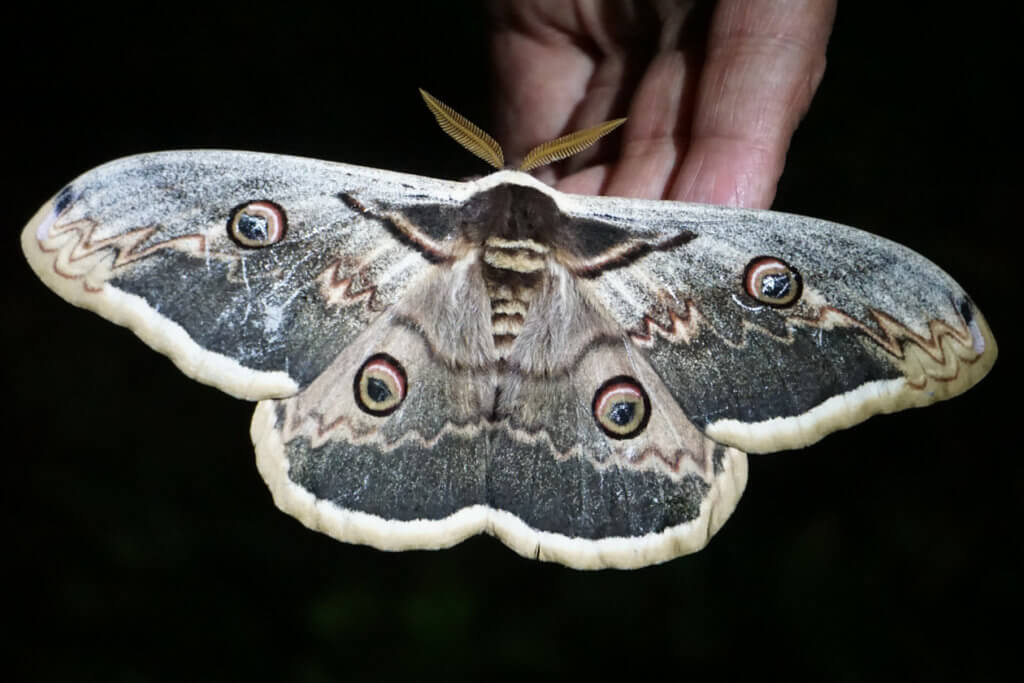
With a wingspan of 150-200 mm this is the largest European moth. I was fortunate to see one a few weeks ago in Arles in southern France, it was attracted to a ground light in the gardens of the hotel where I was staying. At first sight I didn’t believe my eyes, I thought it might be a child’s toy. Then it flew. Thankfully it didn’t fly far. The moth was then very well behaved and jumped onto someone’s hand to give me a picture with a good sense of scale.
The Giant Peacock (Saturnia pyri) can be seen throughout Southern Europe, the Balkans and Turkey. The moths fly from March to June and lay eggs on branches or leaves. The caterpillars live on deciduous trees and shrubs.
[registration_form]
And its smaller relative, the Emperor Moth, can be found across the UK in upland/heathland areas, flying in late April/into May depending on the season. The females are larger than the males and are equally striking (with eye spots too), although not quite as huge as the Giant Peacock Moth!
Jeezus Christ! What a beauty!
In the early eighties Gloucester museum had a specimen of this species on display, it had been found locally – they said it had been blown in or flown in as a very rare migrant. Fantastic sight. However, the museum did have a few other specimens of species such as Indian moon moth that came to moth traps – obviously someone had been rearing exotic moths and releasing them.
I bet it would get blamed for eating grouse chicks.
Like all the Saturnidae or silk moths the adult does not indeed cannot feed it has no mouthparts, the stunning caterpillars feed on a variety of plants. Grouse chicks are unlikely option but one never knows!